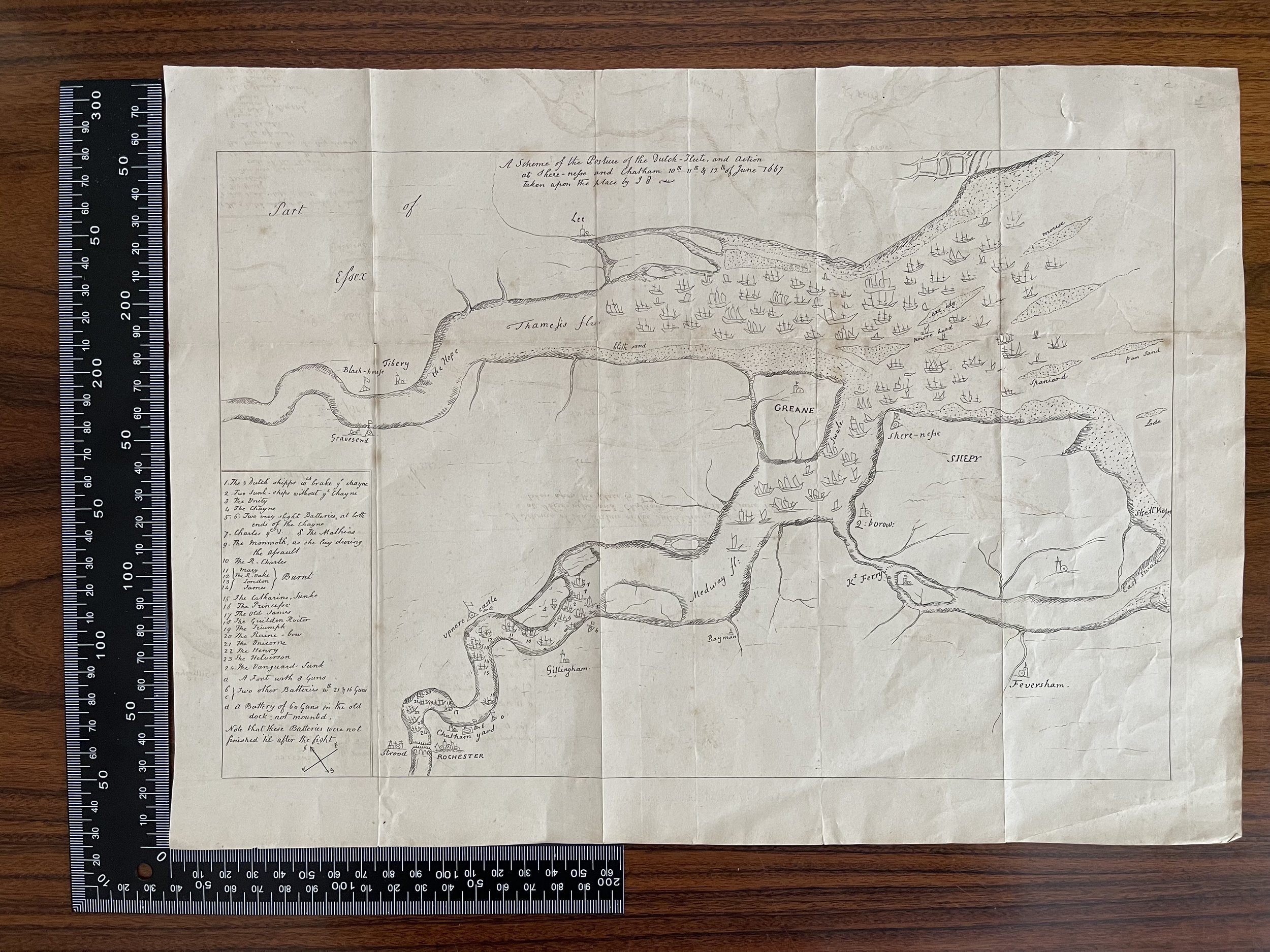 Image 1 of 8
Image 1 of 8

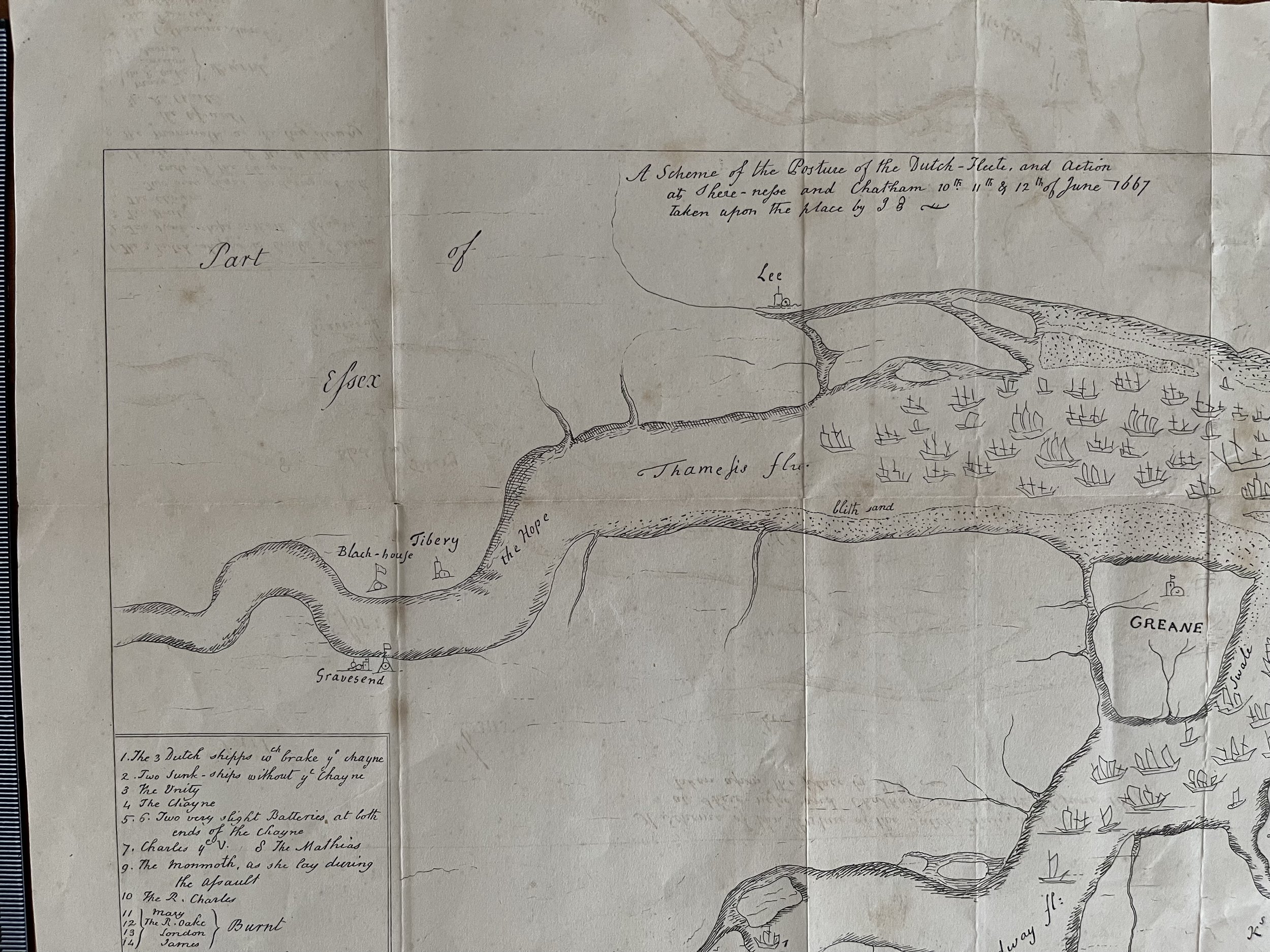 Image 2 of 8
Image 2 of 8

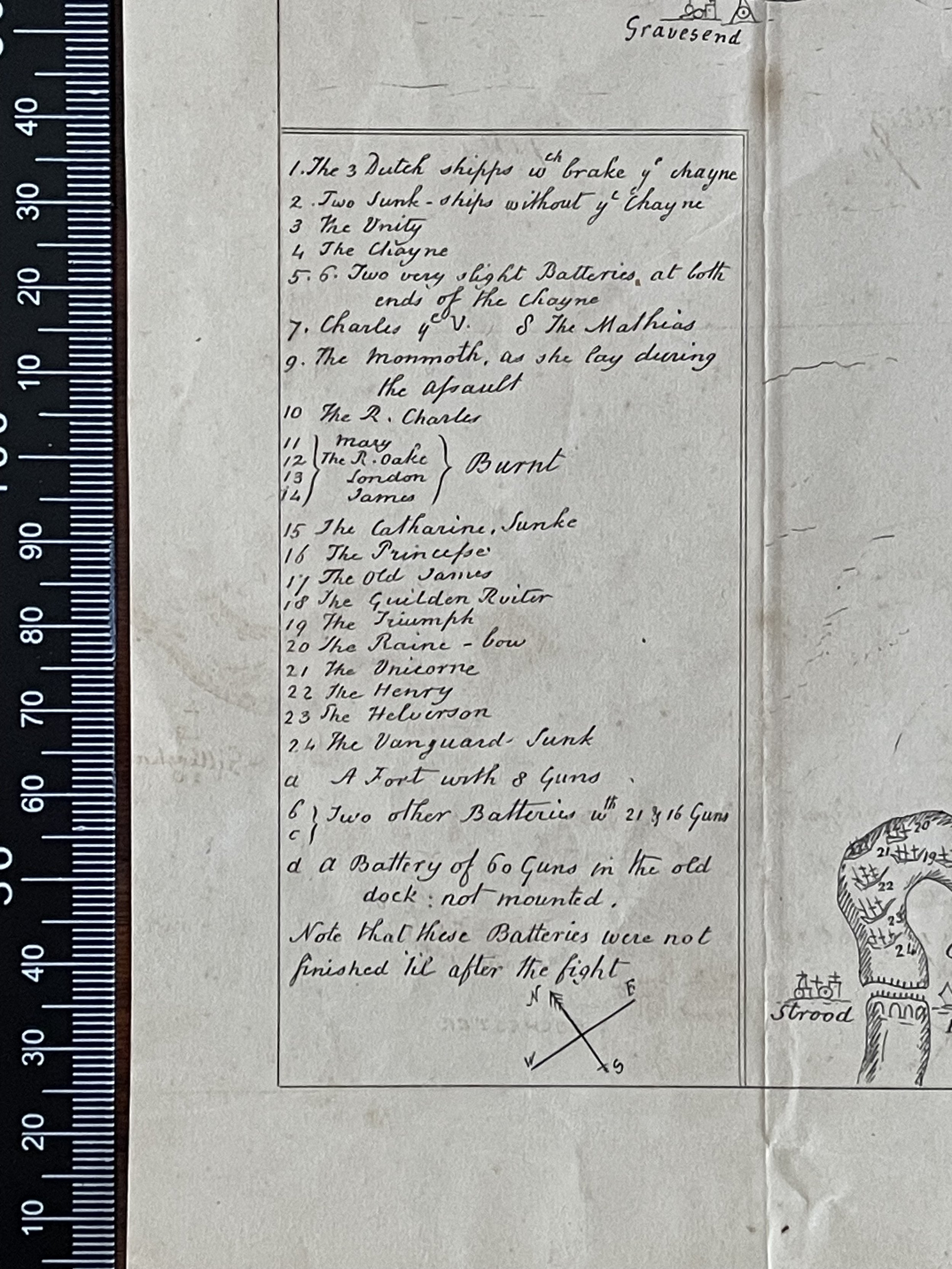 Image 3 of 8
Image 3 of 8

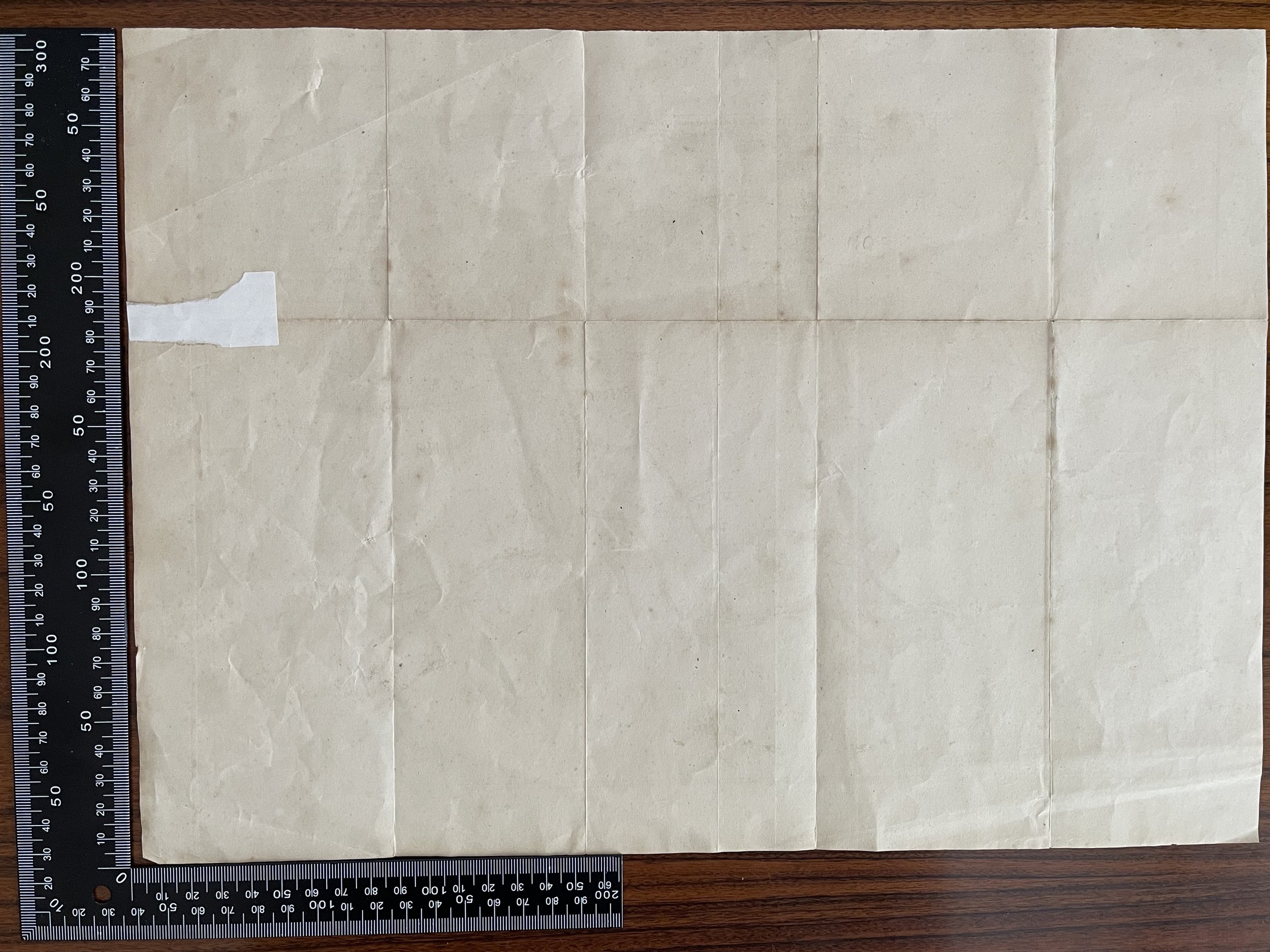 Image 4 of 8
Image 4 of 8

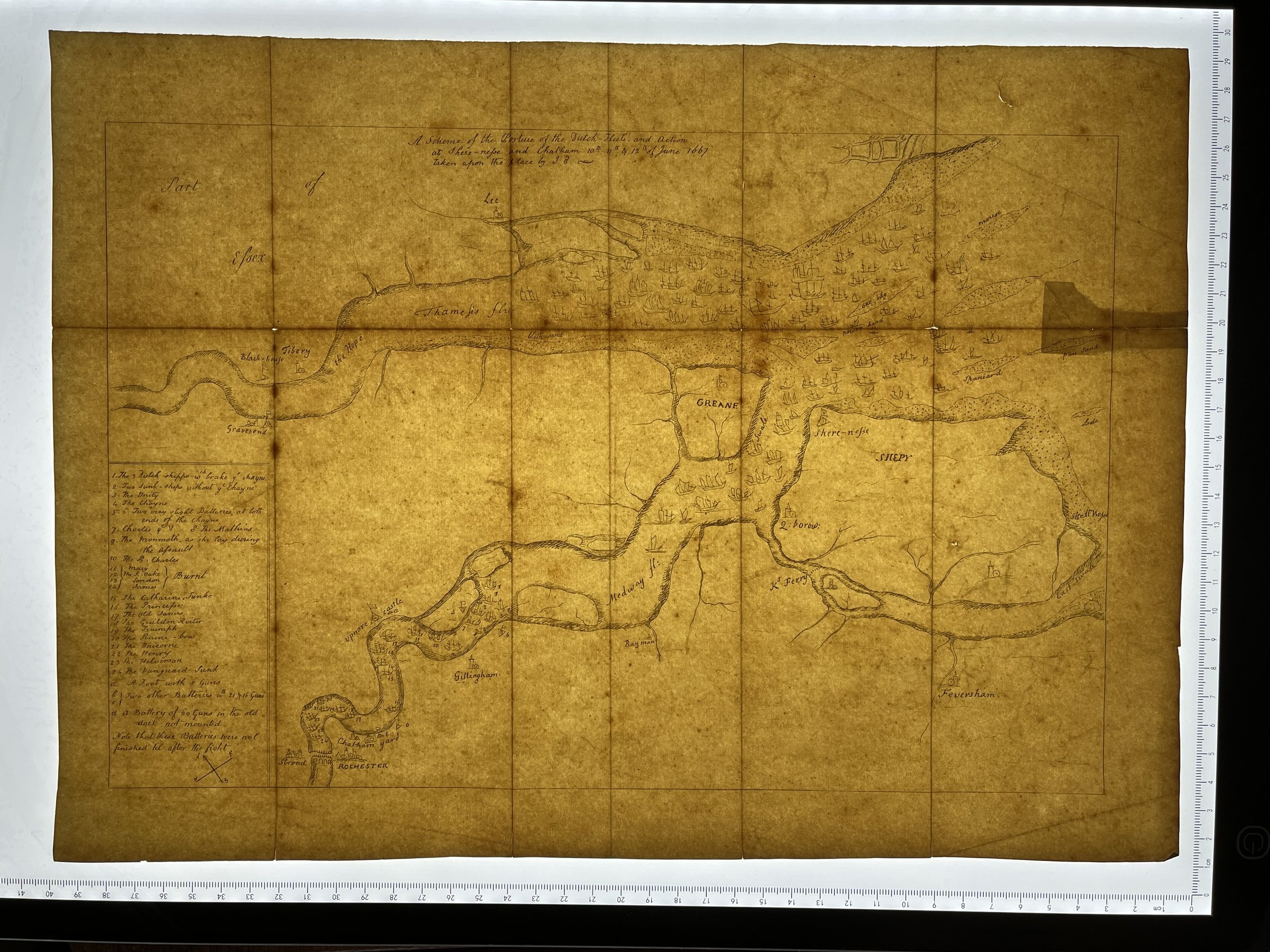 Image 5 of 8
Image 5 of 8

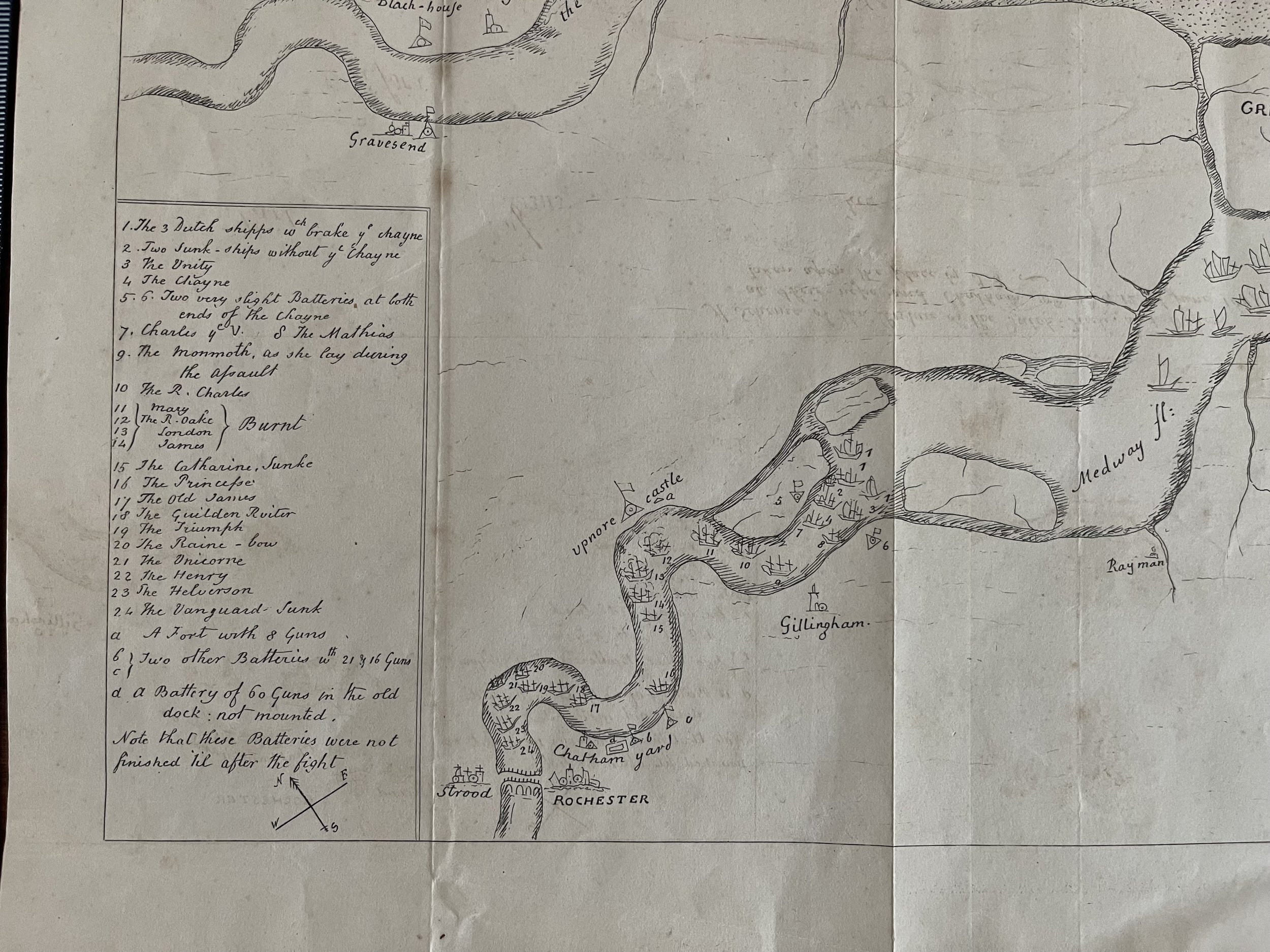 Image 6 of 8
Image 6 of 8

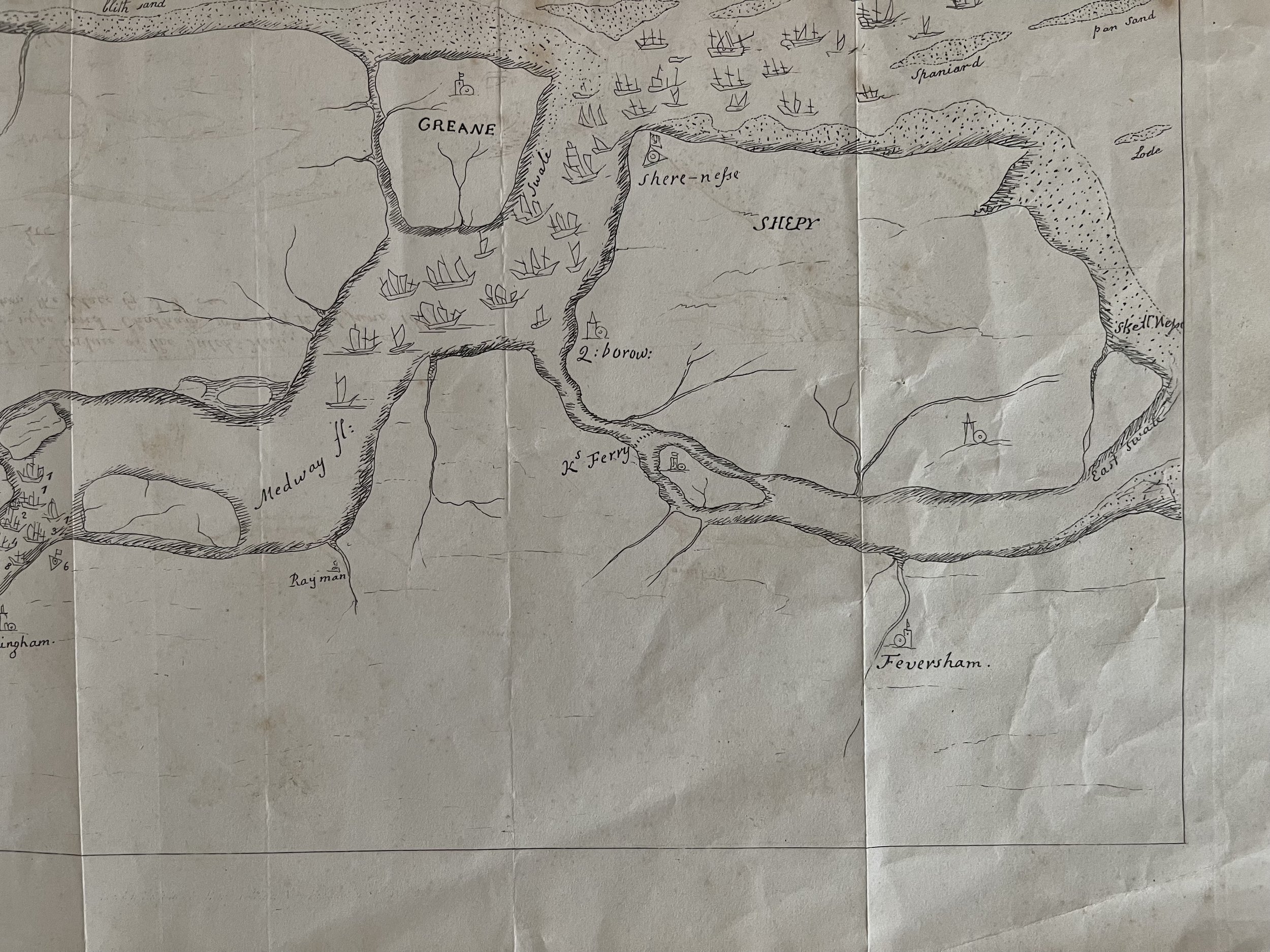 Image 7 of 8
Image 7 of 8

 Image 8 of 8
Image 8 of 8









The Dutch Naval invasion of the Thames and Medway in 1667 - Sir John E Evelyn - 1830
A copy of the contemporary hand-drawn map (Steel Engraving) by John Evelyn - which was found in Samuel Pepys' own papers.
The British library has the original but they are not the printers, what you see here is older.
This is a remarkable map of a remarkable event. Interleaved amongst Naval papers and letters to and from Samuel Pepys in a volume of manuscripts is a drawing by another noted diarist, John Evelyn, of one of the few examples of enemy action on British soil since 1066, the attack on the River Medway in 1667 by the Dutch.
The volume of papers is part of the Rawlinson collection.
Antiquary Richard Rawlinson (1690-1755) donated to the Bodleian over 5,000 manuscripts and nearly 1,800 books on such subjects as theology, literature and history. Evelyn was a contemporary of Samuel Pepys and his diary, which he wrote for most of his life though not to the detail of Pepys's shorter work, was first published in 1818. This map by Evelyn is included in the collection of Pepys manuscripts because of Pepys's role in the Navy, first as an administrator and then, from 1673, as Secretary. The raid was part of the Second Anglo-Dutch War, fought between the two nations from 1665 to 1667 to gain the upper hand in trade and World dominance. Between the 11th and the 13th of June Dutch ships sailed into the Medway, firing on Chatham and This is an extract of the area around Rochester and Chatham Yard. The dotted line between ships 2 and 3 and 7 and 8 is aSheerness and sinking several British ships.
heavy chain laid across the river to prevent the Dutch breaking through, a measure which failed, allowing the Dutch fleet to sail on and attack the British fleet at will. Ships the Royal Oak, the Loyal London and the Royal James, were all burnt while the flagship, the HMS Royal Charles, was captured and towed back to the Netherlands.
John Evelyn FRS (31 October 1620 – 27 February 1706) was an English writer, landowner, gardener, courtier and minor government official, who is now best known as a diarist. He was a founding Fellow of the Royal Society.
John Evelyn's diary, or memoir, spanned the period of his adult life from 1640, when he was a student, to 1706, the year he died. He did not always write daily. The many volumes provide insight into life and events at a time before regular magazines or newspapers were published, making diaries of greater interest to modern historians than such works might have been at later periods. Evelyn's work covers art, culture and politics, including the execution of Charles I, Oliver Cromwell's rise and eventual natural death, the last Great Plague of London, and the Great Fire of London in 1666.
John Evelyn's Diary was first published posthumously in 1818, but over the years was overshadowed by that of Samuel Pepys. Pepys wrote a different kind of diary, in the same era but covering a much shorter period, 1660–1669, and in much greater depth.
Among the many subjects Evelyn wrote about, gardening was an increasing obsession, and he left a huge manuscript on the subject that was not printed until 2001. He published several translations of French gardening books, and his Sylva, or A Discourse of Forest-Trees (1664) was highly influential in its plea to landowners to plant trees, of which he believed the country to be dangerously short. Sections from his main manuscript were added to editions of this, and published separately.
https://blogs.bodleian.ox.ac.uk/maps/2019/02/06/the-battle-of-the-medway-1667/
A copy of the contemporary hand-drawn map (Steel Engraving) by John Evelyn - which was found in Samuel Pepys' own papers.
The British library has the original but they are not the printers, what you see here is older.
This is a remarkable map of a remarkable event. Interleaved amongst Naval papers and letters to and from Samuel Pepys in a volume of manuscripts is a drawing by another noted diarist, John Evelyn, of one of the few examples of enemy action on British soil since 1066, the attack on the River Medway in 1667 by the Dutch.
The volume of papers is part of the Rawlinson collection.
Antiquary Richard Rawlinson (1690-1755) donated to the Bodleian over 5,000 manuscripts and nearly 1,800 books on such subjects as theology, literature and history. Evelyn was a contemporary of Samuel Pepys and his diary, which he wrote for most of his life though not to the detail of Pepys's shorter work, was first published in 1818. This map by Evelyn is included in the collection of Pepys manuscripts because of Pepys's role in the Navy, first as an administrator and then, from 1673, as Secretary. The raid was part of the Second Anglo-Dutch War, fought between the two nations from 1665 to 1667 to gain the upper hand in trade and World dominance. Between the 11th and the 13th of June Dutch ships sailed into the Medway, firing on Chatham and This is an extract of the area around Rochester and Chatham Yard. The dotted line between ships 2 and 3 and 7 and 8 is aSheerness and sinking several British ships.
heavy chain laid across the river to prevent the Dutch breaking through, a measure which failed, allowing the Dutch fleet to sail on and attack the British fleet at will. Ships the Royal Oak, the Loyal London and the Royal James, were all burnt while the flagship, the HMS Royal Charles, was captured and towed back to the Netherlands.
John Evelyn FRS (31 October 1620 – 27 February 1706) was an English writer, landowner, gardener, courtier and minor government official, who is now best known as a diarist. He was a founding Fellow of the Royal Society.
John Evelyn's diary, or memoir, spanned the period of his adult life from 1640, when he was a student, to 1706, the year he died. He did not always write daily. The many volumes provide insight into life and events at a time before regular magazines or newspapers were published, making diaries of greater interest to modern historians than such works might have been at later periods. Evelyn's work covers art, culture and politics, including the execution of Charles I, Oliver Cromwell's rise and eventual natural death, the last Great Plague of London, and the Great Fire of London in 1666.
John Evelyn's Diary was first published posthumously in 1818, but over the years was overshadowed by that of Samuel Pepys. Pepys wrote a different kind of diary, in the same era but covering a much shorter period, 1660–1669, and in much greater depth.
Among the many subjects Evelyn wrote about, gardening was an increasing obsession, and he left a huge manuscript on the subject that was not printed until 2001. He published several translations of French gardening books, and his Sylva, or A Discourse of Forest-Trees (1664) was highly influential in its plea to landowners to plant trees, of which he believed the country to be dangerously short. Sections from his main manuscript were added to editions of this, and published separately.
https://blogs.bodleian.ox.ac.uk/maps/2019/02/06/the-battle-of-the-medway-1667/
A copy of the contemporary hand-drawn map (Steel Engraving) by John Evelyn - which was found in Samuel Pepys' own papers.
The British library has the original but they are not the printers, what you see here is older.
This is a remarkable map of a remarkable event. Interleaved amongst Naval papers and letters to and from Samuel Pepys in a volume of manuscripts is a drawing by another noted diarist, John Evelyn, of one of the few examples of enemy action on British soil since 1066, the attack on the River Medway in 1667 by the Dutch.
The volume of papers is part of the Rawlinson collection.
Antiquary Richard Rawlinson (1690-1755) donated to the Bodleian over 5,000 manuscripts and nearly 1,800 books on such subjects as theology, literature and history. Evelyn was a contemporary of Samuel Pepys and his diary, which he wrote for most of his life though not to the detail of Pepys's shorter work, was first published in 1818. This map by Evelyn is included in the collection of Pepys manuscripts because of Pepys's role in the Navy, first as an administrator and then, from 1673, as Secretary. The raid was part of the Second Anglo-Dutch War, fought between the two nations from 1665 to 1667 to gain the upper hand in trade and World dominance. Between the 11th and the 13th of June Dutch ships sailed into the Medway, firing on Chatham and This is an extract of the area around Rochester and Chatham Yard. The dotted line between ships 2 and 3 and 7 and 8 is aSheerness and sinking several British ships.
heavy chain laid across the river to prevent the Dutch breaking through, a measure which failed, allowing the Dutch fleet to sail on and attack the British fleet at will. Ships the Royal Oak, the Loyal London and the Royal James, were all burnt while the flagship, the HMS Royal Charles, was captured and towed back to the Netherlands.
John Evelyn FRS (31 October 1620 – 27 February 1706) was an English writer, landowner, gardener, courtier and minor government official, who is now best known as a diarist. He was a founding Fellow of the Royal Society.
John Evelyn's diary, or memoir, spanned the period of his adult life from 1640, when he was a student, to 1706, the year he died. He did not always write daily. The many volumes provide insight into life and events at a time before regular magazines or newspapers were published, making diaries of greater interest to modern historians than such works might have been at later periods. Evelyn's work covers art, culture and politics, including the execution of Charles I, Oliver Cromwell's rise and eventual natural death, the last Great Plague of London, and the Great Fire of London in 1666.
John Evelyn's Diary was first published posthumously in 1818, but over the years was overshadowed by that of Samuel Pepys. Pepys wrote a different kind of diary, in the same era but covering a much shorter period, 1660–1669, and in much greater depth.
Among the many subjects Evelyn wrote about, gardening was an increasing obsession, and he left a huge manuscript on the subject that was not printed until 2001. He published several translations of French gardening books, and his Sylva, or A Discourse of Forest-Trees (1664) was highly influential in its plea to landowners to plant trees, of which he believed the country to be dangerously short. Sections from his main manuscript were added to editions of this, and published separately.
https://blogs.bodleian.ox.ac.uk/maps/2019/02/06/the-battle-of-the-medway-1667/
Code : A607
Cartographer : Cartographer / Engraver / Publisher: John E Evelyn
Date : Publication Place / Date - 1830
Size : Sheet size: Image Size: 28.5 by 39 cms.
Availability : Available
Type - Genuine - Antique
Grading A
Where Applicable - Folds as issued. Light box photo shows the folio leaf centre margin hinge ‘glue’, this is not visible otherwise.
Tracked postage, in casement. Please contact me for postal quotation outside of the UK.